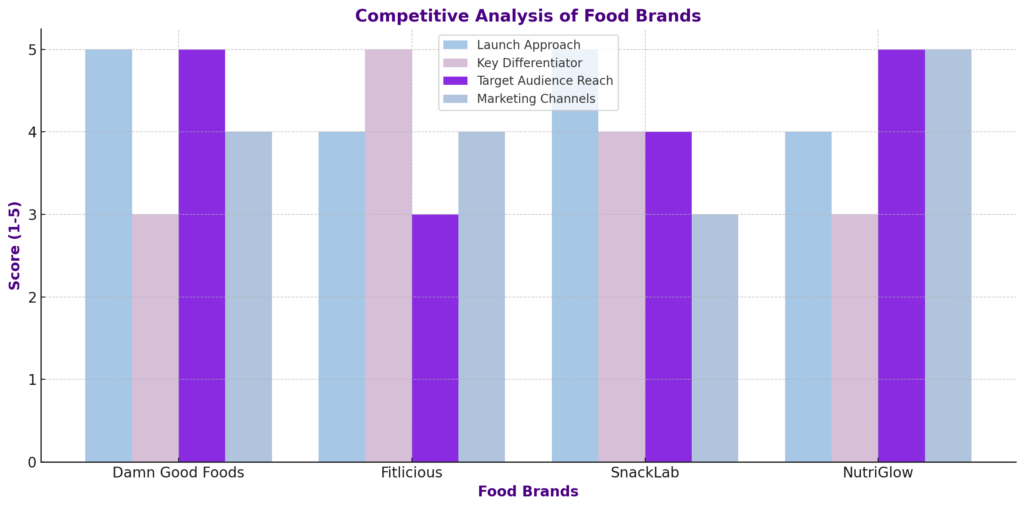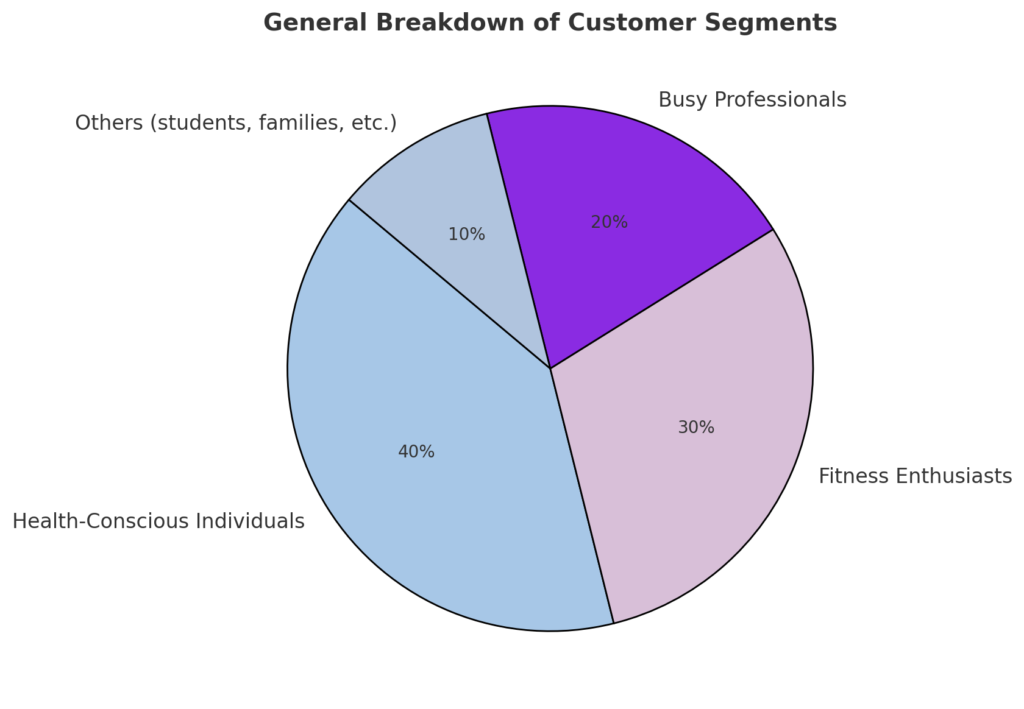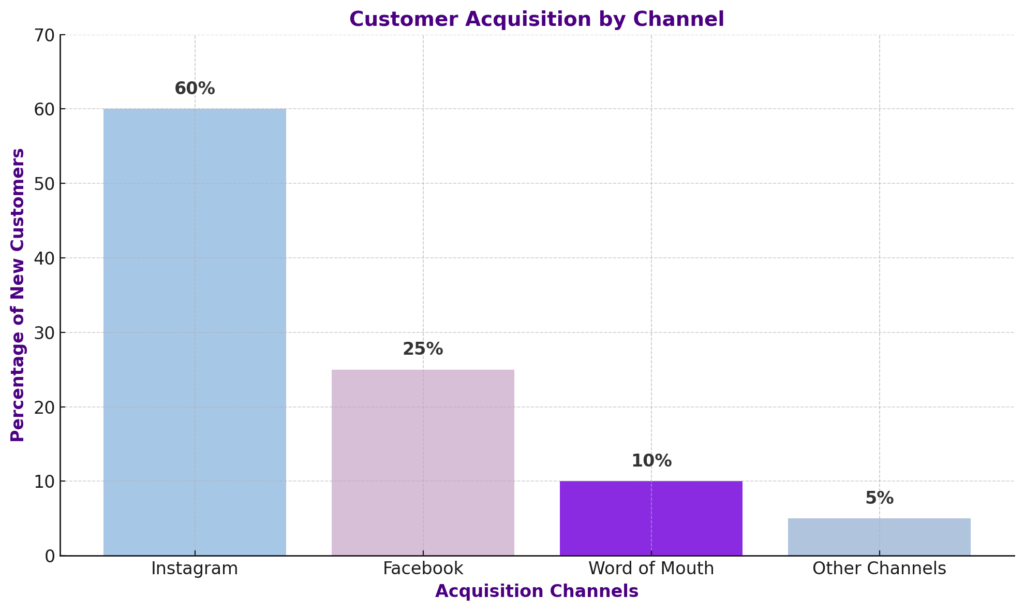How the Business Started
A Passion for Health and the Drive to Make a Difference
Every entrepreneurial journey starts with a spark, an idea, a passion, or a personal experience that drives a person to create something meaningful. For Maham Sultan, the founder of Fitlicious, that spark was a deep-rooted passion for health and wellness.
What started as a personal journey to live a healthier life soon evolved into a mission to bring healthy, nutritious food to the people of Pakistan, a market that, at the time, lacked easily accessible and affordable clean eating options.
Maham’s story is a testament to the power of personal experience in shaping a business idea. After struggling with her own eating habits, Maham realized that there was a significant gap in the market for nutritious, healthy meals that were easy to access.
Armed with a background in health and nutrition, she decided to create a solution that would not only help her but also benefit others. She started preparing homemade healthy meals in her own kitchen and offering them to friends and family. This small-scale venture soon grew in popularity, and the demand for her meals skyrocketed.
But Maham didn’t embark on this journey alone. Her close-knit network, particularly her family, played a critical role in helping her transform this passion into a business.
Her father’s encouragement and her brother’s marketing expertise provided the emotional and practical support she needed to take her idea to the next level. With limited resources, Maham and her family used their combined skills to source ingredients, design the business model, and build a brand that resonated with health-conscious consumers.
What started as a kitchen-based initiative grew into Fitlicious, a company that would later be recognized for revolutionizing the clean-eating space in Pakistan. It was this support from close relationships, family, friends, and an expanding community of customers that fueled Maham’s success.
The collaboration and shared commitment helped Maham transform the challenges she faced into opportunities. This journey highlights a critical principle: success doesn’t only depend on having the best resources, but on leveraging the resources you have, particularly those in your close network, to turn a dream into reality.
Maham’s story exemplifies how personal passion, supported by close relationships, can lead to business success even when resources are limited. Through the trust and contributions of her family, Maham was able to take her vision of healthy, accessible meals and turn it into the thriving Fitlicious brand. It is this combination of passion, resourcefulness, and collaboration that laid the foundation for what would become a successful business.
From Challenges to Breakthroughs
Every entrepreneur faces challenges, but it’s the way these challenges are approached that often determines success.
For Maham Sultan, the founder of Fitlicious, the road to building a successful clean-eating brand was no different.
From navigating the challenges of sourcing ingredients to overcoming market competition, Maham’s journey was filled with obstacles that required creative solutions, unwavering determination, and a supportive network.
1- Sourcing High-Quality Ingredients
As demand for Fitlicious grew, one of the biggest challenges Maham faced was sourcing fresh, high-quality ingredients consistently. Maintaining the integrity of her product, healthy, fresh, and nutritious meals, was non-negotiable.
“We didn’t want to compromise on the quality of our ingredients, but the local market didn’t always offer what we needed,” Maham shared.
To address this, Maham took an active role in building strong relationships with local suppliers. She worked closely with them to ensure consistency and the highest quality.
This collaboration allowed Fitlicious to maintain its standards while also educating suppliers on the importance of sourcing fresh and organic ingredients, which further benefited the entire ecosystem.
2- Managing Supply Chain and Distribution
As the business scaled, the logistical side of things became more complex. Delivering fresh, nutritious meals to customers without compromising the quality was an ongoing challenge.
The demand for timely deliveries was high, and Maham faced pressure to maintain quality while keeping up with a growing customer base.
Maham responded by investing in a more robust distribution system. “We didn’t rush into scaling,” she said. “We took the time to create processes that would ensure we could maintain quality at scale.”
This careful, step-by-step approach to scaling operations helped Fitlicious expand its delivery capacity without losing sight of the brand’s core values.
3- Financial Constraints and Resource Management
Starting a business with limited capital meant that Maham had to be strategic with every investment. Like many entrepreneurs, she had to make every rupee count.
Financial constraints were particularly pressing in the beginning, but Maham used her resourcefulness to manage these limitations.
She kept costs under control by focusing on lean operations and maximizing the use of available resources.
“We were very mindful of our finances,” Maham recalled.
“Every investment we made had to be impactful and bring us closer to achieving our long-term vision.”
Her careful financial planning and prioritization enabled Fitlicious to stay afloat during the early years without relying on external funding.
4- Breaking Market Norms and Consumer Mindsets
Competitive Analysis
| Brand | Launch Approach | Key Differentiator | Target Audience | Marketing Channels |
|---|---|---|---|---|
| Damn Good Foods | From Home Kitchen to Market | High-Quality, Locally Sourced Ingredients | Health-conscious Mindful eaters | Instagram, Word-of-mouth |
| Fitlicious | Online Subscription Meal Plan Launch | Fitness-based Meal Plans | Fitness enthusiasts, busy professionals, and health-conscious individuals aged 25-40. | Instagram Ads, Fitness influencers |
| SnackLab | Grab-and-Go Market | ConvenienceFunctional snacks that combine health benefitsy | Health-conscious snackers, gym-goers, millennials, and eco-conscious consumers. | In-store sampling, TikTok |
| NutriGlow | Focus on Natural & Organic Ingredients | Natural beauty-from-within products combining skincare and wellness. | Natural beauty, wellness, and nutraceuticals. | YouTube, Instagram, TV |

The clean-eating market in Pakistan wasn’t as mature as it is today. Convincing customers to shift to healthier meal options required changing deeply ingrained habits. Many customers were skeptical about the affordability and practicality of clean-eating meals.
Maham used a combination of education and outreach to break through these barriers. Through social media, workshops, and direct customer engagement, she focused on raising awareness about the benefits of clean eating.
“We didn’t just sell meals; we sold the idea of a healthier lifestyle,” she explained.
This approach gradually turned skeptics into loyal customers, giving Fitlicious the traction it needed to grow.
These challenges are a testament to the importance of adaptability, strategic planning, and perseverance in entrepreneurship.
Maham’s ability to leverage her family’s support, collaborate with local suppliers, and take a calculated approach to scaling Fitlicious highlights how obstacles can be turned into opportunities for growth. The power of strong networks and persistence in overcoming adversity is clear in her story.
“We didn’t just sell meals; we sold the idea of a healthier lifestyle,”
she explained.
This approach gradually turned skeptics into loyal customers, giving Fitlicious the traction it needed to grow.
These challenges are a testament to the importance of adaptability, strategic planning, and perseverance in entrepreneurship.
Maham’s ability to leverage her family’s support, collaborate with local suppliers, and take a calculated approach to scaling Fitlicious highlights how obstacles can be turned into opportunities for growth. The power of strong networks and persistence in overcoming adversity is clear in her story.
Scaling Fitlicious: The Power of Relationships and Strategic Growth
"Success is not how high you have climbed, but how you make a positive difference to the world." – Roy T. Bennett
For Maham Sultan, scaling Fitlicious was about much more than just expanding the business. It was about creating a lasting impact, building deep relationships with both customers and suppliers, and making clean eating accessible to more people.
With each step, she intentionally leveraged her network, focused on long-term goals, and embraced the power of patience and timing. Her journey shows how strategic growth, strong community bonds, and unwavering focus on quality can lead to sustainable business success.
1- Building Customer Loyalty Through Meaningful Engagement
From the start, Maham recognized that creating customer loyalty required more than offering great products. It was about building connections.
Fitlicious began by offering fresh, healthy meals that customers could trust, but Maham went further to nurture these relationships.
One of her earliest strategies for engaging customers was through personalized touchpoints, including follow-up communications and offering personalized meal plans.
As Maham says, “We wanted customers to feel like they were part of the Fitlicious family, not just clients.”
"We wanted customers to feel like they were part of the Fitlicious family, not just clients."
Through these meaningful engagements, Maham built a loyal community that didn’t just buy meals but advocated for the brand, furthering its reach through word-of-mouth referrals.
Over time, this loyalty formed the foundation of Fitlicious’ growth, allowing the business to expand without relying heavily on paid advertising.
Market Segment Overview
Health-Conscious Individuals – 40%
Prioritize clean eating and wellness-focused meals.Fitness Enthusiasts – 30%
Look for high-protein, performance-driven food options.Busy Professionals – 20%
Need quick, healthy meals for on-the-go lifestyles.Others (Students, Families) – 10%
Occasional buyers seeking healthier alternatives.

2- Trusting the Process and Growing with Patience
Scaling Fitlicious wasn’t a race. Maham took a strategic, measured approach. Rather than rushing to expand, she focused on refining operations and ensuring quality control every step of the way.
This patience paid off when she started collaborating with local gyms and fitness influencers, leveraging their platforms to promote Fitlicious meals to a wider audience.
By forming strong partnerships with like-minded brands, Fitlicious ensured its reputation was associated with quality and health-focused living.
“I knew that if we grew too quickly, we could lose control over the quality we prided ourselves on,” Maham explained.
This approach allowed Fitlicious to carefully assess each step of its growth, ensuring that it wasn’t just scaling in numbers but also in quality and brand integrity.
3- Expanding Reach through Strategic Collaborations and Influencer Marketing
Understanding the power of social proof and digital marketing, Maham strategically turned to influencer marketing and collaborations with fitness experts to expand Fitlicious’ reach. She sent out free meal boxes to local influencers and gym trainers, who became brand advocates, sharing their experiences with Fitlicious meals on social media.
These collaborations didn’t just promote the product. They created a sense of trust, showcasing Fitlicious as a brand aligned with health-conscious living.
This influencer outreach helped Fitlicious stand out in an otherwise competitive market by tapping into the networks of local influencers who shared the brand’s mission and values.
“Social media was crucial in creating visibility for us,” Maham reflected.
“When people see someone they trust enjoying our meals, it validates the quality we’re committed to.”
4- Leveraging Customer Feedback to Improve and Innovate
Maham understood the importance of keeping the Fitlicious experience fresh and exciting. She actively sought feedback from her customers, using it as a tool for continuous improvement.
By creating a direct communication channel with her audience, she encouraged feedback not only on the meals but on the overall customer experience, from delivery speed to meal variety.
“This constant feedback loop allowed us to innovate on the go, whether that was tweaking recipes or introducing new meal plans,” Maham shared.
The willingness to listen and evolve based on feedback ensured that Fitlicious stayed relevant and maintained customer loyalty.
The scaling journey of Fitlicious was not an overnight success. It was a carefully planned, patient, and strategic growth process that prioritized strong relationships and operational efficiency. Maham’s story underscores the value of nurturing community connections, making calculated expansions, and trusting the process.
By focusing on customers’ needs, staying true to the brand’s mission, and leveraging strategic partnerships, Fitlicious was able to grow into a recognized name in Pakistan’s clean-eating space, all while staying true to its quality-driven ethos.
Lessons Learned from the Fitlicious Journey of Scaling with Strategic Vision
"Teamwork makes the dream work." – John C. Maxwell
As Fitlicious grew from a small startup into a well-recognized brand in Pakistan’s healthy food market, Maham Sultan’s ability to leverage both her personal network and business strategies was pivotal.
The support she received from her community, family, and even her early customers allowed Fitlicious to evolve from a niche offering to a brand with widespread appeal.
1- Experimenting Social Media Beyond Instagram
In today’s digital age, Instagram may be the go-to platform for food businesses to engage with their audience, but Maham’s journey shows that it’s important not to be limited to one platform.
When Fitlicious started in 2015, Maham focused heavily on Facebook as the primary channel for customer engagement. Facebook’s larger, more diverse user base allowed Fitlicious to reach a wide demographic.
As the brand grew, Maham expanded her presence across various platforms and took the time to build a robust community around the brand, using Facebook to engage with local fitness influencers and groups.
This early success demonstrates that while Instagram is an essential tool, emerging businesses can find success through a diversified approach. Exploring multiple platforms and utilizing each for its unique strengths.
Fitlicious’s initial customer growth came from Facebook, with Instagram becoming a key platform for brand recognition as the business expanded.
“You have to understand the ecosystem around your customer,” Maham explained.
“Instagram wasn’t our first point of entry, and that’s why diversifying the customer touchpoints early on was crucial.”
Marketing Channel Breakdown (Estimated)
Instagram: 60% of new customers
Facebook: 25% of new customers
Word of Mouth: 10%
Other Channels (Collaborations, Events) – 5%

2- Operational Efficiency and Quality Control
Scaling Fitlicious while maintaining the same high-quality standards was no small feat. As demand for the meals grew, Maham faced the challenge of maintaining consistency without compromising quality.
With an increasing number of orders coming in, she focused on operational improvements, introducing internal quality control systems to ensure that every meal met Fitlicious’s standards. She implemented daily checks for freshness, meal preparation, and packaging, and invested in developing standardized recipes to ensure consistency.
This focus on operational efficiency, combined with rigorous quality control measures, allowed Fitlicious to scale without diminishing the core offering of fresh, healthy, and tasty meals. Maham used the growth of her customer base to test new operational methods, refine her processes, and ensure customer satisfaction every step of the way.
3- Building a Customer-Centric Brand through Engagement
Maham’s focus on building and maintaining customer relationships became one of the cornerstones of Fitlicious’s success. The brand wasn’t just about delivering healthy food. It was about engaging customers in a conversation.
Maham took steps to make customers feel valued, not just as consumers but as part of the Fitlicious journey. Fitlicious actively encouraged feedback through social media interactions, email surveys, and face-to-face interactions.
Over time, Maham saw the benefits of this customer-first approach. Satisfied customers turned into loyal advocates who helped spread the word about Fitlicious, boosting organic growth. Customer loyalty played a huge role in Fitlicious’s sustained success, proving that engagement is just as crucial as the product itself.
4- Tapping into Partnerships for Expansion
Fitlicious’s growth was also propelled by partnerships, especially with gyms, fitness influencers, and corporate clients.
The brand’s health-focused message resonated well with gyms, fitness communities, and wellness influencers who were looking for healthier, convenient meal options.
Maham strategically collaborated with these stakeholders to create bespoke meal plans, sponsor fitness events, and reach fitness enthusiasts directly. These collaborations helped Fitlicious to extend its reach and solidify its position in the market.
As Maham explains, “Partnerships allowed us to tap into a community that already aligned with our values, and that’s how we were able to scale in a relatively short period of time.”
What Fitlicious’s Journey Teaches Us
Maham Sultan’s entrepreneurial journey can be likened to the growth of a plant in a challenging climate. At the early stages, the plant depends on a strong root system to absorb nutrients and withstand external pressures.
Similarly, Fitlicious found its strength in creating a solid foundation built on trust, collaboration, and a commitment to promoting healthy eating. This foundation provided the support needed to overcome obstacles, navigate financial constraints, and scale the business in a competitive market.
As the business grew, Fitlicious branched out, expanding its offerings and forming deeper connections with its environment, its customers, suppliers, and fitness communities. This phase marked the shift from local to national recognition, as Fitlicious successfully cultivated loyalty and amplified its reach through strategic collaborations and community-building.
The key takeaway is clear: cultivating a strong brand foundation, much like a plant’s roots, is essential for resilience and sustainable growth. Maham’s story emphasizes that for entrepreneurs, particularly in an emerging market like Pakistan, building a business isn’t just about having a great product. It’s about fostering relationships that are grounded in trust and shared commitment. These networks, whether through community engagement or strategic collaborations, serve as pillars that enable businesses to grow and thrive.
In Pakistan’s developing economy, where resources like funding, mentorship, and formal support systems can be limited, businesses like Fitlicious prove the critical role of networks in fostering innovation and driving success.
Maham’s experience with Fitlicious shows that the real value lies in the ability to connect and nurture relationships with both customers and partners. Her focus on health and fitness aligned with her customers’ needs, allowing her to build a strong following and gain customer loyalty.
In a resource-constrained environment, Fitlicious’s success underscores the importance of social capital, relationships that offer support, trust, and resources to overcome obstacles. By strategically building connections and keeping a keen focus on the customer, Maham has shown that businesses can turn challenges into opportunities, and even in a competitive market, there is always room for brands that focus on authenticity and community.
Fitlicious is a testament to the power of nurturing relationships, fostering loyalty, and growing a business that has long-term sustainability. It teaches us that the success of a business isn’t just in the product or service it offers, but in how well it can connect with its community and build on those relationships.
Maham’s story exemplifies the idea that success is rooted in strong networks, trust, and collaboration. These factors turn constraints into opportunities, driving growth and sustainability. So, whether you’re starting a small business or scaling an existing one, remember to nurture your connections. They may be the secret ingredient for your success.

